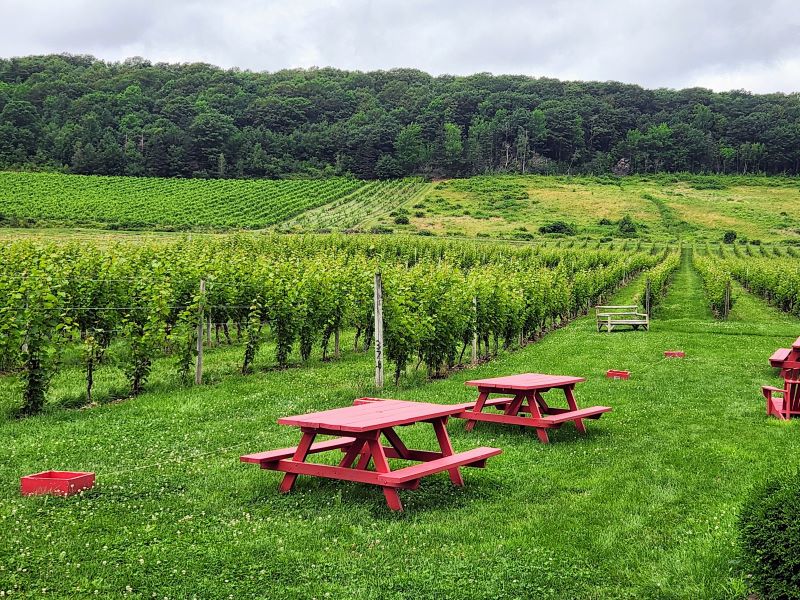
Wine tourism has emerged as a dynamic segment within the global travel industry, offering enthusiasts immersive experiences that blend cultural exploration with the art of winemaking. In 2023, the global wine tourism market was valued at approximately $46.47 USD billion and is projected to grow at a compound annual growth rate (CAGR) of 12.9% from 2024 to 2030, reaching an estimated $106.74 USD billion by 2030.
This growth is driven by increasing consumer interest in unique and immersive travel experiences, the expanding global wine culture, and the rising popularity of wine-related activities such as tours and tastings. Europe has accounted for over 51% of the market revenue in 2023, continuing to lead, while emerging destinations like Moldova and Croatia are gaining prominence.
This upward trend underscores the growing appeal of wine tourism as a multifaceted experience that enriches travelers’ journeys worldwide.
Exploring the Multifaceted Benefits of Wine Tourism
Wine tourism, or enotourism, offers travelers a unique opportunity to immerse themselves in the world of wine, blending cultural exploration with the appreciation of viticulture. This form of tourism has gained significant popularity, attracting enthusiasts to wine regions worldwide.
Understanding Wine Tourism
Wine tourism, or enotourism, has its roots in ancient civilizations, evolving alongside the history of winemaking itself. Early examples can be traced to Ancient Rome, where wealthy elites visited vineyards in regions like Campania to source fine wines. During the Middle Ages, monasteries across Europe preserved winemaking traditions, attracting pilgrims who combined spiritual journeys with tasting renowned vintages.
In its modern form, wine tourism gained traction in the mid-20th century. Regions like France’s Bordeaux and Italy’s Tuscany began promoting vineyard visits as a blend of leisure and cultural exploration.
This idea spread globally, with regions like California’s Napa Valley pioneering winery tours, tastings, and food pairings. Today, wine tourism is a thriving industry, offering travelers immersive experiences that celebrate the art, history, and culture of winemaking.
Cultural Enrichment
Engaging in wine tourism offers profound cultural enrichment, allowing travelers to delve into the traditions and heritage of wine-producing regions.
- Historical Insights: Many wineries boast rich histories, with some estates operating for centuries. For instance, Château de Goulaine in France has been producing wine for over a thousand years, offering visitors a glimpse into its storied past.
- Local Traditions: Participating in local wine festivals and events provides insight into regional customs. The National Wine Day in Moldova, for example, celebrates the country’s 7,000-year-old winemaking tradition, allowing visitors to experience authentic cultural expressions.
- Culinary Experiences: Wine tourism often includes pairing local wines with traditional cuisine, offering a holistic taste of the region’s gastronomic heritage. In Bordeaux, France, some châteaux have begun offering dining experiences that combine gastronomy with oenology, enhancing the wine tourism experience.
Educational Opportunities
Wine tourism serves as an educational journey, providing insights into viticulture and oenology.
- Winemaking Processes: Tours often include detailed explanations of grape cultivation, fermentation, and aging, offering a deep understanding of wine production. For example, visitors to Oregon wineries can learn about the state’s unique winemaking techniques and grape varieties.
- Tasting Techniques: Guided tastings educate visitors on identifying flavor profiles, understanding terroir, and appreciating the nuances of different wine styles. In regions like Napa Valley, California, wineries offer structured tastings to enhance visitors’ palates.
- Sustainable Practices: Many wineries showcase their commitment to sustainability, educating tourists on eco-friendly viticulture methods. In California, for instance, sustainable wine programs are widely adopted, reflecting the state’s dedication to environmental responsibility.
Economic Contribution
Participating in the industry contributes significantly to local economies.
- Revenue Generation: Tourist spending in wine regions supports local businesses, from wineries to hospitality services. In Temecula Valley, California, tourism spending reached $1.1 billion in 2018, reflecting the economic impact of wine tourism.
- Job Creation: The influx of visitors leads to employment opportunities in vineyards, restaurants, hotels, and tour services. In Napa Valley, the wine industry supports a significant portion of the local workforce, with many residents employed in wine-related industries.
- Community Development: Increased tourism can lead to improved infrastructure and public services, enhancing the quality of life for local residents. For example, the development of wine tourism in Moldova has contributed to the preservation and development of the cultural heritage of wine regions.
Personal Fulfillment
Wine tourism offers personal enrichment, combining leisure with learning.
- Sensory Experience: Tasting diverse wines amidst picturesque landscapes provides a feast for the senses, creating lasting memories. Regions like Tuscany, Italy, offer scenic vineyard tours that delight visitors.
- Social Interaction: Sharing experiences with fellow travelers and engaging with winemakers fosters a sense of community and connection. In California’s wine regions, younger generations are embracing vineyard experiences that combine discovery, connection, and storytelling.
- Knowledge Acquisition: Learning about wine enhances appreciation and can spark a lifelong interest or hobby. Guides like those by Enrico Bernardo, the “world’s best sommelier,” provide valuable insights for enthusiasts.
Best Locations For Wine Tourism
Wine tourism offers travelers the chance to explore some of the most picturesque and culturally rich regions in the world. From the sun-drenched vineyards of California to the historic estates of Europe, each destination offers a unique blend of scenery, history, and exceptional wines. Here are some of the top locations for wine tourism:
Napa Valley, USA
Napa Valley, California, is synonymous with luxury wine tourism. Known for its world-class Cabernet Sauvignons, the region offers stunning landscapes, gourmet dining experiences, and iconic wineries like Opus One and Stag’s Leap. Napa also excels in creating immersive experiences, such as hot air balloon rides over the vineyards or wine blending workshops.
Bordeaux, France
Bordeaux is one of the most prestigious wine regions globally, renowned for its rich red blends. Visitors can tour grand châteaux, explore the city’s UNESCO-listed old town, and indulge in tastings that highlight Bordeaux’s winemaking heritage. Many wineries also host cultural events, including art exhibits and classical music performances.
Tuscany, Italy
Tuscany’s rolling hills and charming medieval towns make it a favorite for wine enthusiasts. The region is famous for Chianti and Brunello wines, often paired with rustic Italian cuisine. Visitors can enjoy vineyard tours, traditional wine cellars, and cooking classes that teach the art of Tuscan cuisine.
Wrapping Up
Wine tourism offers a gateway to discovering the intricate relationship between land, culture, and craftsmanship that defines winemaking. Beyond the vineyards, it also provides opportunities for outdoor adventures, wellness retreats, and eco-tourism, making it a versatile travel choice.
If you’re a seasoned connoisseur or a curious traveler, wine tourism invites you to explore the world through its diverse and flavorful lens.










 Instagram Feed
Instagram Feed








 #postcardsfromthewo
#postcardsfromthewo





 New post on blog, link in
New post on blog, link in 






Leave a Comment